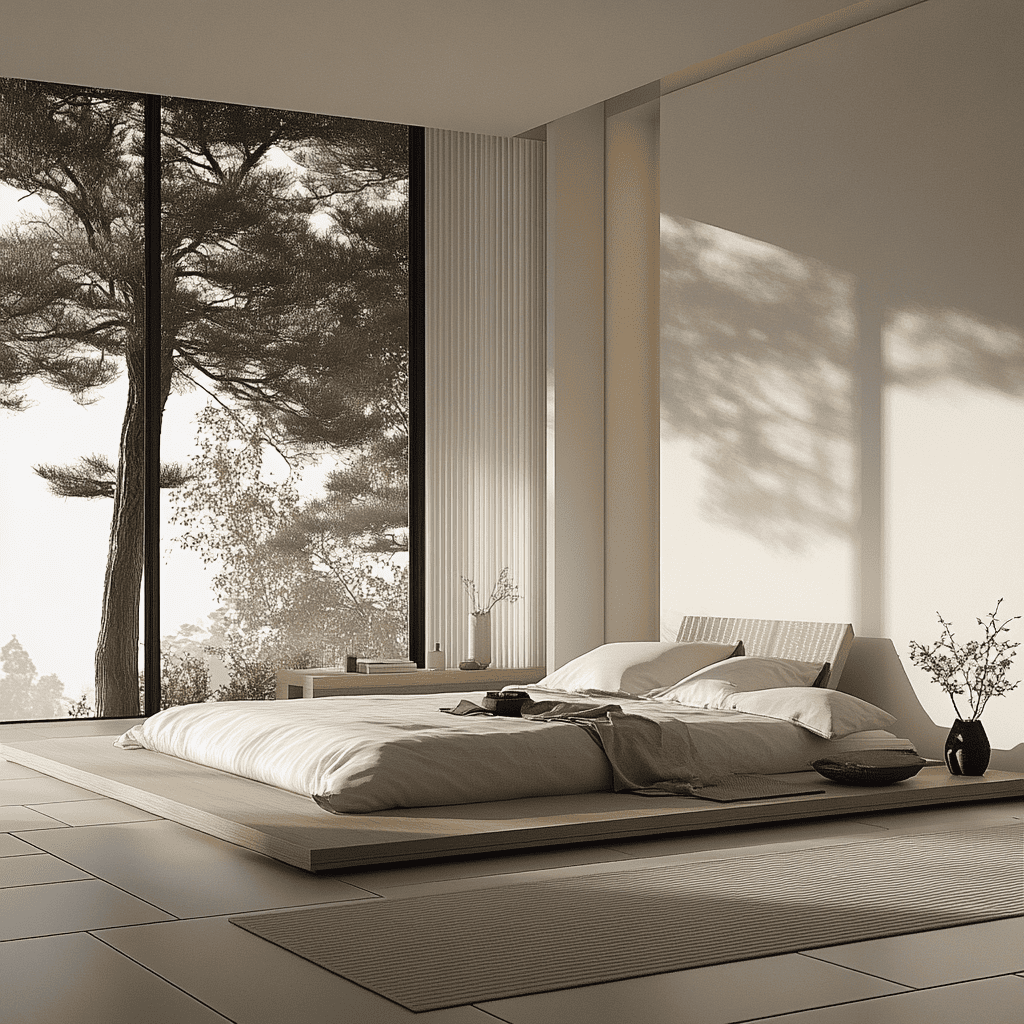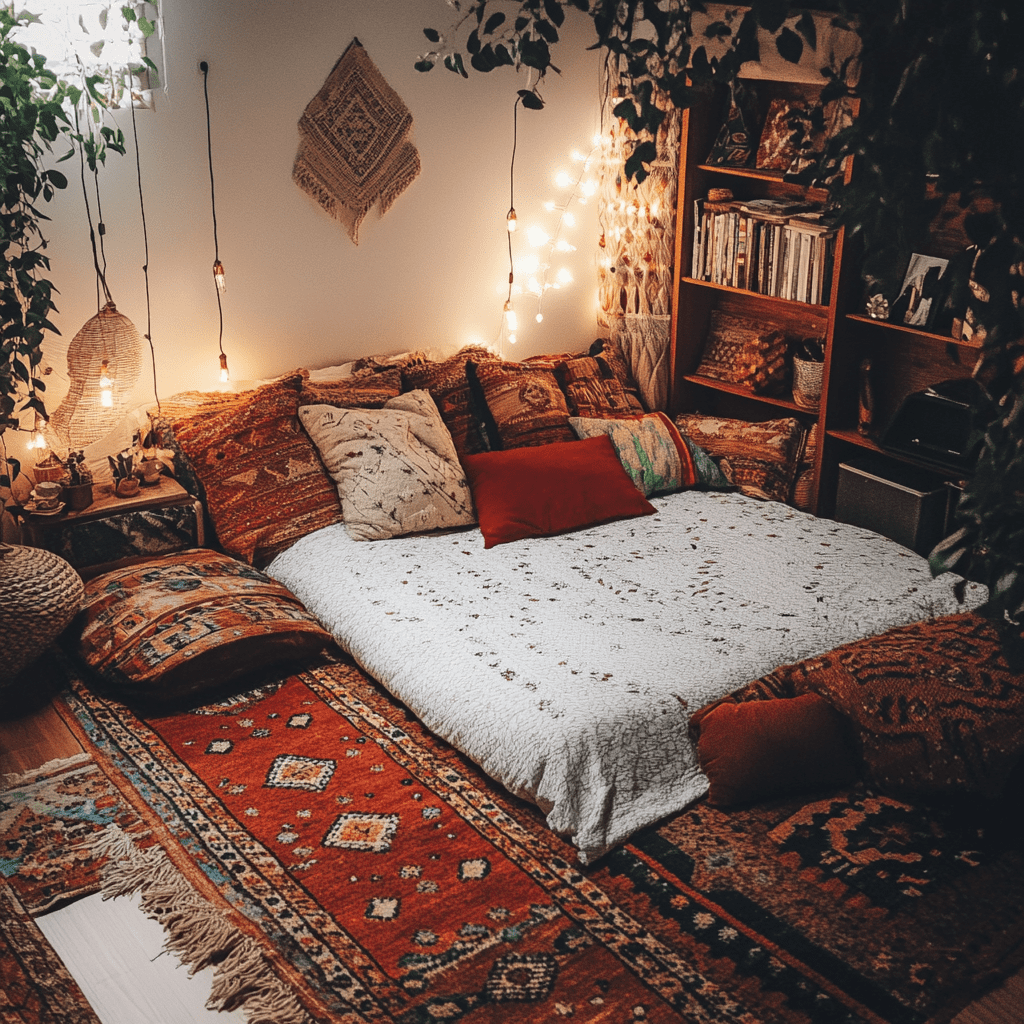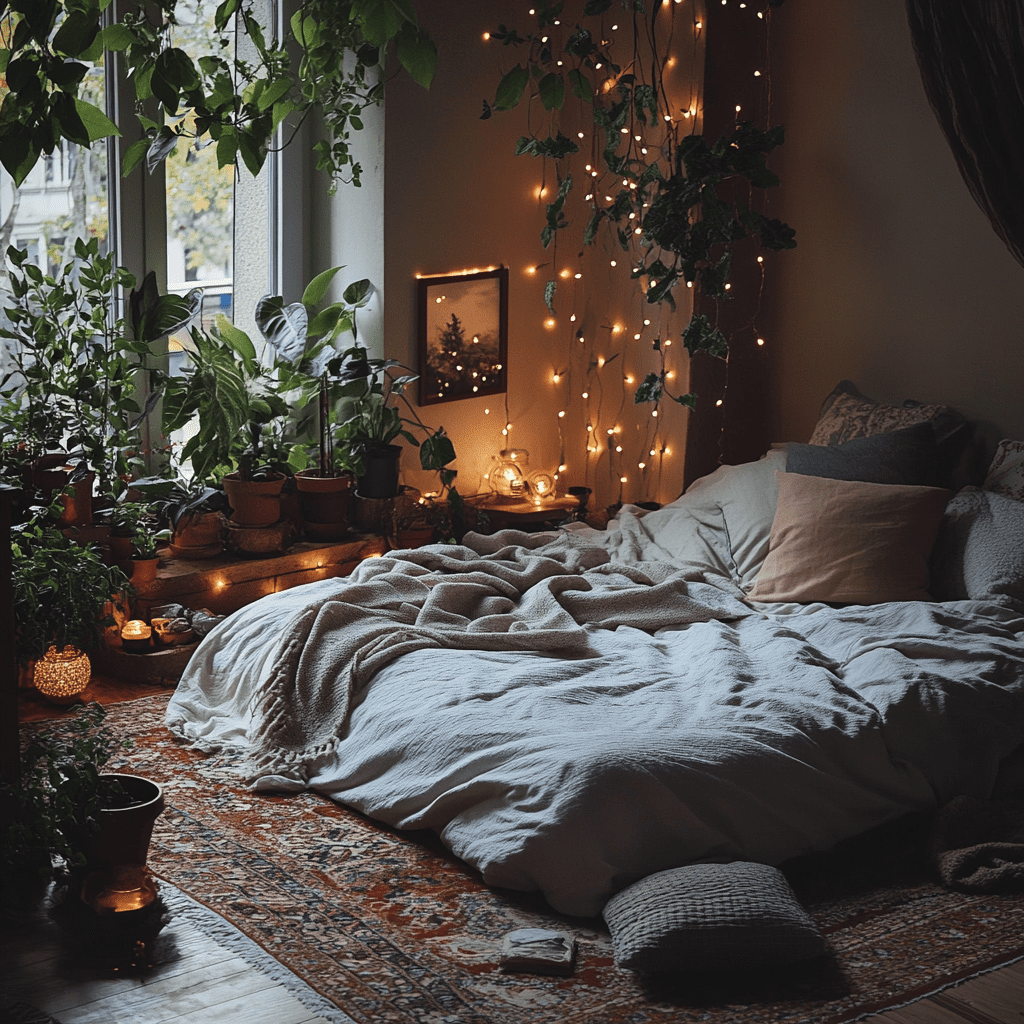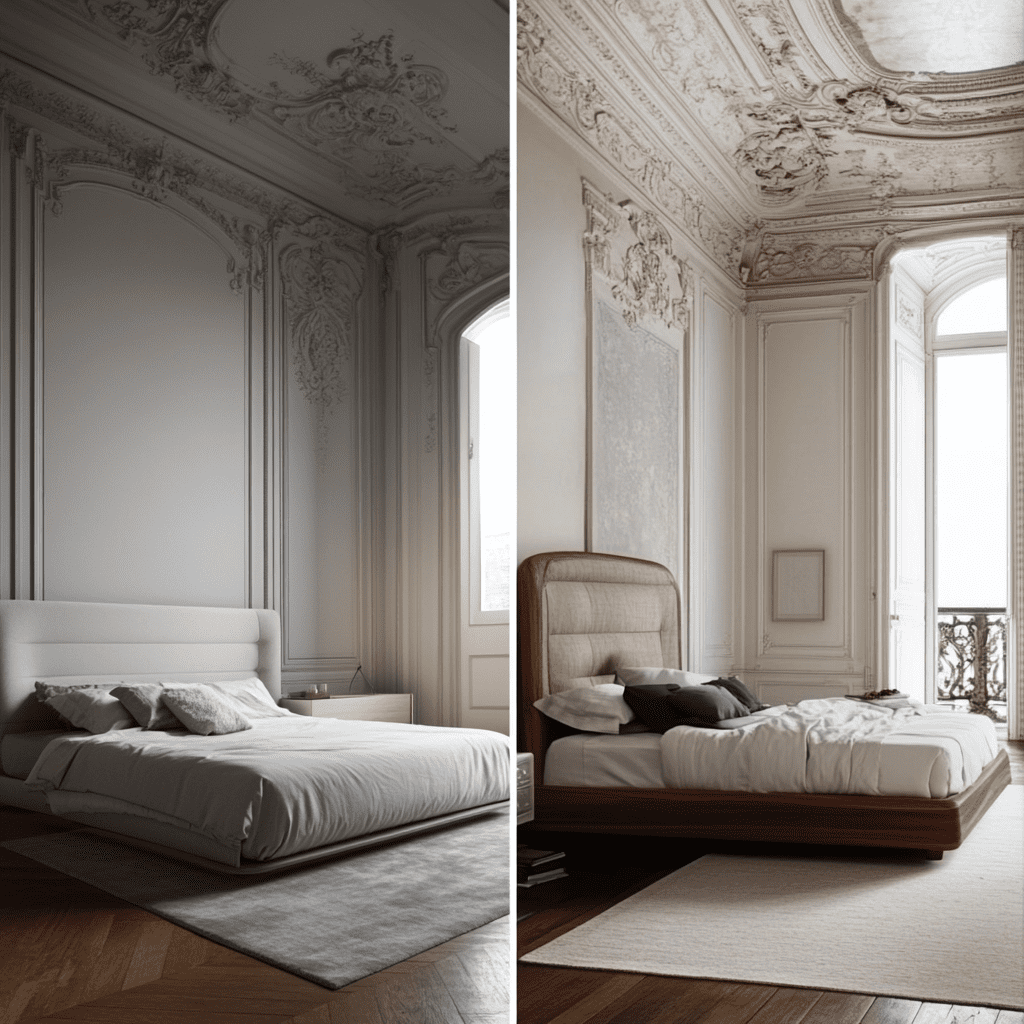Floor bed
Style, Comfort, and Benefits for a Natural Rest
Advantages of Sleeping on a Floor Bed: Connection with Nature and Postural Health
Sleeping on a floor bed is a practice that has gained popularity in recent years, especially among those seeking a more natural and minimalist lifestyle. This choice not only reflects a closer connection with nature but also offers a range of postural health benefits that can significantly improve sleep quality. Below, we will explore the advantages of sleeping on a floor bed and how this practice can positively influence your physical and emotional well-being.
One of the main benefits of sleeping on a floor bed is the direct connection with the earth, which promotes a sense of stability and security. Being closer to the ground provides a greater sense of grounding, which can have a calming and relaxing effect on the body and mind. This more direct contact with the natural environment is particularly beneficial for those looking to reduce stress and anxiety, as it helps create a more serene and balanced resting environment. Additionally, on a more practical level, a floor bed can make better use of the fresh airflow that circulates at ground level, contributing to a more restorative sleep.
From a postural health perspective, a floor bed can be an excellent option for those looking to improve spinal alignment. Sleeping on a firmer surface, such as a mattress directly on the floor, can provide more support for the body, helping to maintain proper posture throughout the night. This can be especially useful for people suffering from back pain or joint problems, as a floor bed can reduce pressure points and promote a more natural alignment of the spine. However, it’s important to ensure that the mattress used offers the right level of support and comfort.
In addition to postural benefits, sleeping on a floor bed can also contribute to a more minimalist and mindful lifestyle. This type of bed requires less furniture and necessities, which can help reduce visual clutter and promote a calmer, more orderly environment in the bedroom. By eliminating the need for an elevated bed frame, a sense of spaciousness is created in the room, which is especially useful in small spaces or studio apartments. This minimalist approach not only fosters a cleaner, more uncluttered resting environment but can also reflect a commitment to sustainability and simplicity in daily life.
The use of a floor bed has a long tradition in various cultures around the world, adding cultural value and a sense of global connection to this practice. In Japan, for example, it is common to sleep on futons placed directly on tatami, a practice that reflects the importance of multifunctional space and harmony with nature. Similarly, in many cultures in the Middle East and Asia, it is customary to sleep on mattresses on the floor, which facilitates the maintenance of a clean and orderly home, as well as fostering family and community closeness. These cultural practices highlight the versatility and benefits of sleeping on the floor, showing how this approach can adapt to different lifestyles and needs.

In summary, choosing a floor bed can not only improve your postural health and connection with nature but also simplify your space and bring you closer to cultural practices from around the world. Be it for reasons of physical well-being, minimalist lifestyle, or simply exploring new ways of resting, sleeping on a floor bed offers a range of advantages that can positively transform your sleep routine and your home as a whole.
Floor Bed Designs and Styles: Options for Every Type of Decor
A floor bed is a versatile and stylish option that adapts to a wide variety of interior decor styles. This type of bed not only offers a minimalist and functional approach but also allows you to play with different design elements to create a unique and personalized bedroom. Below, we will explore various design and style options for integrating a floor bed into your home, no matter what your decorative preference may be.
For those who love the minimalist style, a floor bed is a natural choice. This approach is based on simplicity, functionality, and the absence of unnecessary elements. A floor bed fits perfectly into a minimalist environment by reducing the number of furniture pieces and focusing attention on the simplicity of the design. To achieve this style, opt for a clean-lined mattress placed directly on the floor, accompanied by bedding in neutral tones such as white, gray, or beige. You can add a touch of warmth with a natural fiber rug or a knitted throw, keeping the space clear and serene.
If you prefer a more rustic or bohemian atmosphere, a floor bed can become the centerpiece of a cozy and character-filled bedroom. In this style, natural materials and warm textures can be used to create a relaxed and bohemian ambiance. A mattress on the floor covered with linen or cotton sheets and surrounded by colorful or ethnic-patterned cushions is an excellent way to capture this aesthetic. You can complement the look with decorative elements such as wicker baskets, clay potted plants, and floor lamps with soft lighting. This approach creates a place to sleep that invites relaxation and comfort, full of personality and style.

For a modern and contemporary design, a floor bed can stand out for its simplicity and elegance. In this case, the bed becomes a key piece within a space that combines modern and high-tech elements. Opt for a low-profile mattress with an upholstered base in an elegant fabric such as velvet or faux leather. Dark colors like charcoal gray or black can add a touch of sophistication to the space. Additionally, consider incorporating ambient lighting like LED strips underneath the mattress to create a floating effect, adding a modern and luxurious element to the design.
In a zen or Japanese-inspired space, the floor bed reflects the essence of simplicity and harmony with nature. This style is characterized by the use of natural materials, neutral colors, and a focus on functionality without excess. A traditional Japanese futon or a thin mattress placed directly on a tatami mat is an excellent option for this type of decor. Complement the space with elements like wooden panels, shoji sliding doors, and bamboo plants to create a calm and balanced atmosphere, ideal for meditation and rest.
For those seeking a more eclectic or artistic style, a floor bed offers an opportunity to mix and match different styles and colors. In this approach, there are no strict rules: you can combine a simple mattress with blankets and cushions of different textures, patterns, and vibrant colors. Add art on the walls, patterned rugs, and furniture from different eras to create a unique space that reflects your personality and creativity. The floor bed acts as a blank canvas that you can customize according to your tastes and mood.
Finally, if space is a luxury, you can opt for a multifunctional design that combines the floor bed with integrated storage solutions. Placing the bed on a platform with drawers or a low frame with additional storage space is a smart way to maximize space usage in small rooms. This design is ideal for those looking to maintain an organized and clutter-free environment without sacrificing style.
The floor bed is a flexible design option that adapts to any decor style. Whether you prefer a minimalist, rustic, modern, zen, or eclectic environment, a floor bed can be the central element that defines the character and functionality of your bedroom. With the right choice of materials, colors, and accessories, you can create a place to relax that is not only comfortable but also visually appealing and in harmony with your personal style.
How to Create a Cozy Space with a Floor Bed: Decorating Tips and Tricks
Creating a cozy space with a floor bed is an opportunity to design an environment that is both comfortable and aesthetically pleasing. Although this type of bed may seem simple, with the right decorating tips and tricks, you can transform any room into an oasis of comfort and style. Below are some key ideas to make your floor bed the centerpiece of a warm and inviting space.
One of the most important aspects of creating a cozy atmosphere with a floor bed is choosing soft and warm textiles. Without an elevated base, the bed becomes an integral part of the space, so it’s crucial that the textiles contribute to the feeling of comfort. Opt for high-quality cotton or linen sheets, plush blankets, and plenty of cushions. Natural fabrics and soft textures like velvet or wool add an extra layer of warmth, making the bed inviting for rest and relaxation. Additionally, using multiple layers of textiles in different tones and textures can create a visually cozy and sophisticated effect.
The strategic use of rugs can also transform the feel of a space with a floor bed. Placing a large, soft rug under the bed not only adds comfort but also defines the resting area, making the room feel more structured and cozy. Wool or shag rugs are ideal for adding a sense of luxury and warmth underfoot, especially during the colder months. Additionally, rugs with soft patterns or warm colors can complement the bedroom’s color palette and add an extra touch of style.
Lighting plays a crucial role in creating a cozy atmosphere. With a floor bed, it’s important to use a combination of soft, warm lights to create a relaxing environment. Table lamps with fabric shades, string lights, or floor lamps with dimmers are excellent options for controlling the amount of light in the room. Placing lights close to the floor, such as LED strips under the bed or low floor lamps, can enhance the sense of warmth and make the bed feel even cozier.
Color is another key element in designing a cozy space with a floor bed. Neutral and warm tones like beige, soft gray, terracotta, or off-white help create a calm and relaxing atmosphere. These colors are ideal for walls and bedding, as they promote a sense of calm and well-being. If you prefer a pop of color, you can introduce deeper and cozier tones like olive green or navy blue in accessories or on an accent wall. These colors bring a sense of depth and comfort to the space.

In addition to textiles, rugs, and lighting, natural elements can add a cozy and organic touch to the room. Incorporating potted plants around the floor bed not only brings life and freshness to the space but also helps purify the air, contributing to a healthier environment. Large-leaf or hanging indoor plants can soften the lines of the space and create a more welcoming and relaxing atmosphere.
Finally, simplicity and order are essential to maintaining a cozy space. Since a floor bed integrates directly into the surroundings, it is important to avoid visual clutter. Use smart storage solutions, such as wicker baskets or decorative boxes, to keep personal items organized and out of sight. A clean and orderly space is key to creating a peaceful and inviting environment where you can fully relax.
With the right choice of textiles, rugs, lighting, colors, and natural elements, you can transform a floor bed into the heart of a cozy and serene space. These decorating tricks will not only enhance the comfort of your bedroom but also reflect your personal style, creating an environment where you truly feel at home.
Floor Bed vs. Traditional Bed: Comparing Comfort, Space, and Style
The choice between a floor bed and a traditional bed is a decision that depends on various factors, including comfort, space usage, and the desired style for the bedroom. Each option has its own advantages and disadvantages, and the right choice depends on individual needs and preferences. Below, we will explore the differences between a floor bed and a traditional bed, comparing these three key aspects.
In terms of comfort, a floor bed offers a unique experience. Being directly on the floor, the mattress provides a firmer base, which can be beneficial for those who prefer extra support for their back. This firmness helps maintain proper spinal alignment during sleep, which can relieve or prevent back pain. However, it’s important to choose a high-quality mattress that offers the right level of support to avoid any discomfort. On the other hand, a traditional bed, which includes a box spring or elevated base, can offer a different sleeping experience. Box springs typically have a degree of flexibility, which can make the bed more comfortable for those who prefer a softer, more cushioned surface. Additionally, traditional beds allow for mattress ventilation, helping to keep it cool and moisture-free.

In terms of space usage, a floor bed can be an excellent option for small rooms or studios where every inch counts. Without a bulky structure, the bed integrates directly into the environment, which can make the room feel more spacious and open. Additionally, a floor bed is easy to move and relocate, making it ideal for those who frequently change their space’s layout. However, a traditional bed, especially those with built-in storage like drawers or compartments underneath, can offer a more practical solution in terms of organization. These beds allow you to use the space under the mattress to store bedding, clothes, or any other items, which is especially useful in rooms with limited storage space.
When it comes to style, the floor bed is often associated with a minimalist and modern approach. This type of bed is popular in decors that prioritize simplicity and functionality, such as Japanese or Scandinavian design. The absence of an elevated frame or headboard allows the bedroom to maintain a clean and orderly look, which is ideal for those seeking a serene and relaxing atmosphere. On the other hand, traditional beds come in a variety of styles and designs, from classic to contemporary, offering more options to personalize the space. With elaborate headboards, wood or metal finishes, and a greater presence in the room, traditional beds can be the centerpiece of a more detailed and textured bedroom decor.
In addition to comfort, space, and style, it’s also important to consider practical factors like accessibility and ease of cleaning. A floor bed may be less accessible for older people or those with mobility issues, as it requires bending down more to lie down and get up. However, its proximity to the floor prevents the buildup of dust and allergens. Conversely, a traditional bed, with its elevated height, may be easier to use for people of all ages but may require more effort to keep the space underneath clean.
In conclusion, both the floor bed and the traditional bed have their own advantages and disadvantages in terms of comfort, space usage, and style. The choice between the two depends on your personal preferences and the specific needs of your space. Whether you opt for the simplicity and modernity of a floor bed or the functionality and personalized design of a traditional bed, the important thing is that your choice provides you with a place where you can rest comfortably and enjoy an environment that reflects your lifestyle.
For more information visit 1abeds.com
